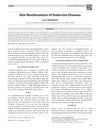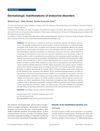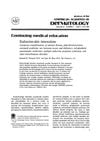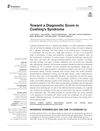Cyclic Cushing Syndrome Caused By An ACTH-Producing Pheochromocytoma
October 2023
in “
Journal of the Endocrine Society
”
Cushing syndrome ACTH pheochromocytoma hair loss skin changes cortisol catecholamines chromogranin A adrenal nodule PET/CT scans adrenalectomy hydrocortisone prednisone pituitary-adrenal axis Cushing's disease adrenocorticotropic hormone Pheo PET scan adrenal gland removal cortisol replacement steroid replacement

TLDR A woman's cyclic Cushing syndrome was caused by a tumor in her adrenal gland that produced ACTH.
A 72-year-old female with a five-year history of cyclic symptoms consistent with Cushing syndrome (CS) was diagnosed with an adrenocorticotropic hormone (ACTH)-producing pheochromocytoma (Pheo). Her symptoms included weight fluctuations, hair loss, skin changes, emotional lability, and glucose intolerance. Biochemical tests revealed elevated levels of ACTH, cortisol, catecholamines, and chromogranin A. Imaging studies identified a right adrenal nodule, which was intensely active on PET/CT scans. The patient underwent successful right adrenalectomy, and the mass was confirmed to be a Pheo with ACTH production. Postoperative results showed normalized blood pressure and suppressed morning cortisol and ACTH levels, requiring physiological replacement with hydrocortisone and later prednisone. At a six-month follow-up, the patient's pituitary-adrenal axis remained suppressed. This case highlights the diagnostic challenge of cyclic CS and the importance of considering ACTH-producing Pheo in cases of ACTH-dependent hypercortisolism with an adrenal mass.




